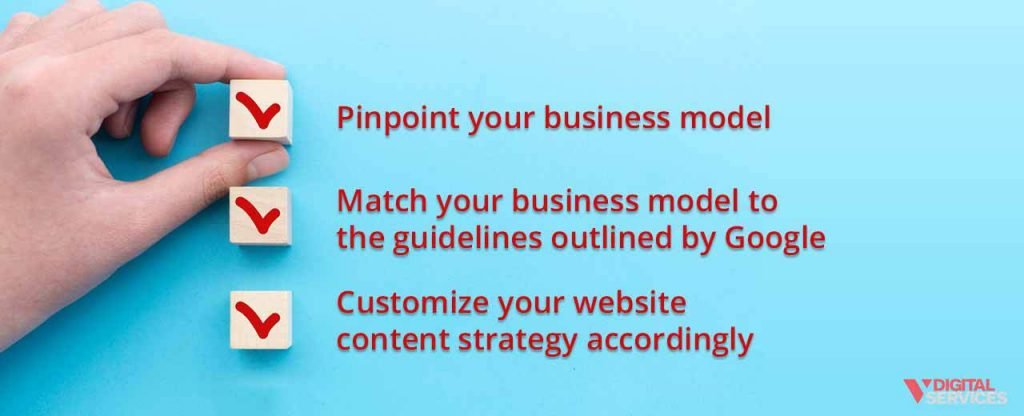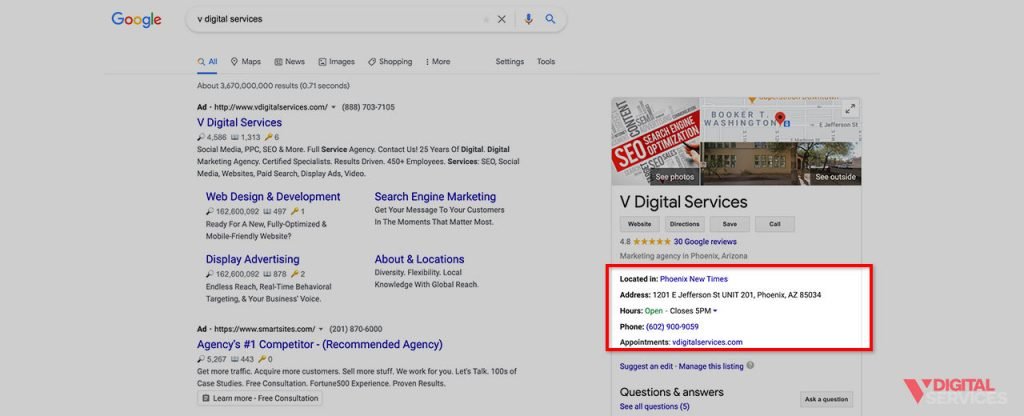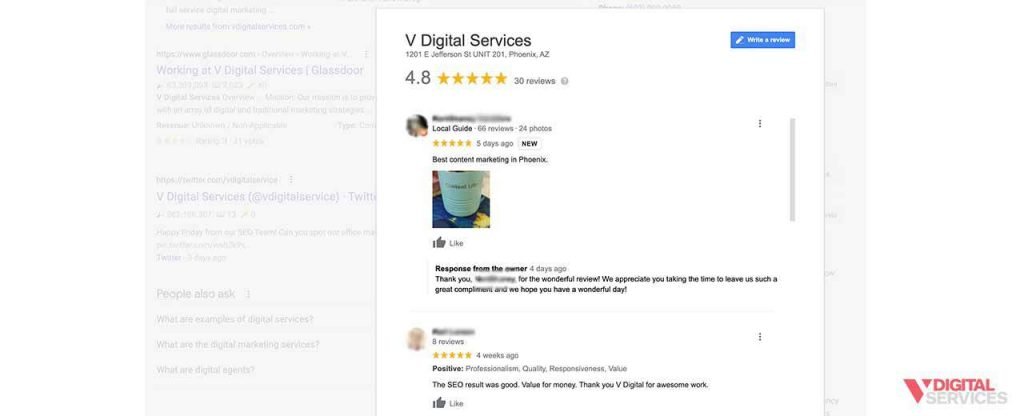When the right customer finds your website at the right time – when they’re in the right place – it’s all thanks to a little bit of online magic known as local search engine optimization (SEO).
Actually, local SEO isn’t so much magic as it is a tech-powered strategy. And while SEO experts aren’t exactly keyboard-wielding wizards, they are masters of their craft in their own right. But however you prefer to think of local SEO, there’s one thing that’s certain: it can work wonders for your business.
A solid local SEO strategy can’t be built with a one-size-fits-all approach, primarily because connecting your business with online search users near you is a highly precise science of sorts. To boost your local SEO ranking, you’ll need to create a plan that takes various factors into account, including your specific business type. Combine that with local SEO best practices, and you can make sure your website is getting seen in the SERPs.
Our local SEO team has put together customized local SEO checklists for six common business models, laying out a personalized path to SEO success. With your SEO checklist in hand, you’ll be ready to take aim at the first page of search results and bring customers to your front door.
A Local SEO Checklist for Your Business Type

- Pinpoint your business model
- Match your business model to the guidelines outlined by Google
- Customize your website content strategy accordingly
Seems simple enough, right? Even if you aren’t ready to implement a full-blown SEO plan on your own (hint: this is where partnering with a professional can be a huge help), at the very least, you can build a better understanding of your next steps.
Here are checklists for local SEO, with options to match six business types. Find your business model, then get to work!
Single Location Brick and Mortar
-
- First, is this the correct model for your business? This business model features a single physical location that customers can visit in-person. If yes, move to step two. If not, continue browsing business models below.
- Now, match your business model to the corresponding Google guidelines. This model needs just one Google Business Profile (GBP) listing with a clearly visible address. Keep in mind that virtual offices and P.O. boxes cannot be used.
- Finally, devise a website content strategy that appropriately aligns with your business model and related SEO best practices. Set up a high-quality page for each individual product or service you offer. Remember that every type of business should have an effectively-designed foundation of basic pages, including Home, About, Testimonials, and Contact webpages.
Multi-Location Brick and Mortar
-
- First, is this the correct model for your business? This business model features multiple physical locations that customers can visit in-person. If yes, move to step two. If not, continue browsing business models below.
- Now, match your business model to the corresponding Google guidelines. Create a Google Business Profile (GBP) listing for each individual location, confirming that a correct address is visible for each one. Additionally, make sure that every location is listed with a unique phone number. P.O. boxes and virtual offices are not accepted by Google.
- Finally, devise a website content strategy that appropriately aligns with your business model and related SEO best practices. Design a unique page for each physical location, including the complete NAP (name, address, phone number) at the top of each location’s webpage. Also, add individual pages for each product or service you offer. Remember that every type of business should have an effectively-designed foundation of basic pages, including Home, About, Testimonials, and Contact webpages.
Single Location Service Area Business
-
- First, is this the correct model for your business? This business model features a single staffed location, serving as a “hub” for staff that go into the field to serve customers. If yes, move to step two. If not, continue browsing business models below.
- Now, match your business model to the corresponding Google guidelines. You will use one Google Business Profile (GBP) listing. If you serve customers at your physical location, you can check the corresponding box in the address section of your Google Business Profile profile dashboard. If you only serve customers in the field (for example, providing service in their homes), request to hide your address. You cannot use P.O. boxes or virtual addresses for this business type.
- Finally, devise a website content strategy that appropriately aligns with your business model and related SEO best practices. You’ll first build a quality webpage for each of the products or services you offer. Then, add individual pages for each important city (or regional area) within your service area. Remember that every type of business should have an effectively-designed foundation of basic pages, including Home, About, Testimonials, and Contact webpages.
Multi-Location Service Area Business
-
- First, is this the correct model for your business? This service business model features multiple staffed locations that operate as a “home base” for staff that go into the field to serve customers. If yes, move to step two. If not, continue browsing business models below.
- Now, match your business model to the corresponding Google guidelines. You will complete one Google Business Profile (GBP) listing for each of your locations. Each listing should include a unique phone number for the location. If you serve customers at one or more physical business locations, you can check the corresponding box in the address sections of your Google Business Profile profile dashboard. If you only serve customers in the field (for example, providing service in their homes), request to hide your address. Because you can edit each location’s listing independently, you can opt to list some as open for customer service while keeping the address of others private. You cannot use P.O. boxes or virtual addresses for this business type.
- Finally, devise a website content strategy that appropriately aligns with your business model and related SEO best practices. Your website should include individual pages for each of your products or services, as well as unique web pages for each location with the NAP (name, address, and phone number), included at the top. Lastly, create web pages for each key city or region that your business serves beyond your physical locations. Remember that every type of business should have an effectively-designed foundation of basic pages, including Home, About, Testimonials, and Contact webpages.
Multi-Office Campus or Multi-Practitioner Business
-
- First, is this the correct model for your business? This business model is typically a match for schools, hospitals, legal firms, and other similar operations. If yes, move to step two. If not, continue browsing business models below.
- Now, match your business model to the corresponding Google guidelines. For each forward-facing practitioner or office, fill out a Google Business Profile (GBP) listing. Each listing needs a unique phone number and should be formatted with the practitioners’ names if applicable (for example, “John Smith” rather than “John Smith: Cornerstone Law Offices”). Do not use P.O. boxes or virtual offices.
- Finally, devise a website content strategy that appropriately aligns with your business model and related SEO best practices. Every office within your campus (or partner within a practice) should have an individual web page, including the correct NAP (name, address, phone number) in the top section. Also, you will create singular pages for each product or service you offer. Remember that every type of business should have an effectively-designed foundation of basic pages, including Home, About, Testimonials, and Contact webpages.
Home-Based Business
-
- First, is this the correct model for your business? This business model can feature either a brick and mortar or service-area business, but the common denominator is an owner that has selected a private address. If yes, move to step two. If not, review the options above.
- Now, match your business model to the corresponding Google guidelines. This business type needs just one Google Business Profile (GBP) listing. If preferred, you can select the option to hide your address on your GBP dashboard. You can’t complete the listing using a P.O. box or virtual office location.
- Finally, devise a website content strategy that appropriately aligns with your business model and related SEO best practices. Your website will need to include individual pages for each of the products or services you provide. Also, design a high-quality page for each of the cities or regions that you serve. Remember that every type of business should have an effectively-designed foundation of basic pages, including Home, About, Testimonials, and Contact webpages.
Local SEO Steps for All Businesses
Mastering local SEO can get very complex, very quickly. If we were to put together a guide to every one of the many SEO ranking factors out there, you’d be scrolling for a long time. That’s why a growing number of businesses are turning the task over to SEO experts as part of a partnership with full-service marketing teams.
But maybe you aren’t quite ready to take that leap – or you are, but you still want to learn more about how to use local SEO strategies to help customers find you online. Either way, here are some basic tips for improving your local search rankings and securing a steady flow of potential customers.
1. Make sure your site fits all the technical website criteria.
It doesn’t matter what your business model (or, for that matter, your marketing strategy) may be: if your website can’t measure up on the technical side, you’re going to struggle with SEO performance.
All local businesses need a website that is:
- Free from errors
- Indexable
- Compliant with multiple devices (mobile-friendliness is key)
- Effectively structured
- Properly optimized
This might sound like a tall order, but failing to check off even one of these boxes can seriously impact your SEO goals.
Know what is required for local website optimization.
Once you can confidently say that your website can pass the tech criteria set, there’s still more work to be done.
Optimizing a site for local SEO means that you’ll need to:
- Create a “Contact Us” page that includes a name, address, and phone number (NAP) for each staffed location
- Place the NAP of each location in the sitewide footer element, if you have 10 or fewer total locations
- Utilize Schema markup of your business location data
- Check to make sure that your phone number is easy to see and can be clicked by mobile users
- Every mention of your NAP is correct and consistent (this is particularly important for multi-location or multi-practitioner businesses)
- Link all of your individual location pages to a single, high-level navigation menu
- Provide a phone number that will be answered during business hours, if you decide to keep your address private
3. Perfect your local content
In terms of SEO, content often reigns supreme. Low-quality, thin, or duplicate content can affect your ranking factors, so pay attention to every word on your webpages.
Some common content mistakes to watch out for include:
- Pulling exact content (copy and pasting) from other websites, including manufacturer websites or industry authorities
- Using duplicate or thin content for products/services offered in multiple cities (if you are unable to create quality content for every city and keyword combination, aim for solid pages for each city and each product/service instead)
- Spreading content out over multiple websites unnecessarily
Now that you know what not to do when rounding out your content, here’s a quick checklist of things you can do to make your content as search-friendly as possible:
- Incorporate testimonials or customer reviews for individual service cities so that each city/region landing page can easily be made unique
- Select customer reviews that mention specific services or products to add to related pages
- After you’ve finished your basic web pages, start to work on an on-site blog to support consistent rankings for target keywords
- Consider images and video on page content as well, incorporating tags in real text
- Distinguish each of your location pages’ content by providing location-specific specials, sales, schedules, or calendars
- Write bios for key staff at various locations
- Participate in local events to seize opportunities for unique local content
- Create resources (for example, tips, checklists, and informational articles) that are designed for a target audience within a certain geographical location or demographic
4. Set up citations

Not only do citations make it easier for potential customers to find your business online, but they can also contribute to your local search rankings.
Here’s a checklist that covers the basics of citations:
- Decide whether automated vs. manual citation building is the right fit for you.
- Create sets of citations for each of your physical business locations, double-checking that the business address, name, phone number, and website URL are correct in all.
- Be aware of best practices for abbreviations, and know that it’s normal to see some variations depending on the platform.
- Confirm that each citation for a multi-location or multi-practitioner business is correctly linked to the corresponding location landing page on your website.
- Once you are established on local business data platforms, look beyond the basic sites to expand your online presence. Search for industry-specific platforms, as well as those tailored to your geographical area.
- Track down and eliminate duplicate citations.
5. Don’t underestimate the power of reviews for rankings (and conversions).
Customer reviews are worth their weight in gold for local businesses, serving multiple purposes. Not only does a positive review support your reputation management efforts while building trust in your business, but it can also support a higher search ranking and increase conversions.

- Check the major online review platforms to claim your listing (if necessary) and confirm that all of the information is correct. Start with Google Business Profile, Yelp, and Facebook, and then move on to industry-specific platforms or local review sites.
- Remember that most local SEO experts believe that Google reviews are a key factor in Google local rankings.
- Understand that flooding your listing with reviews is a red flag for many platforms. Instead, strive for a slow but steady flow of authentic reviews.
Turn to V Digital Services for Your Best-Fit Local SEO Solutions
Local SEO can be the deciding factor between attracting your target audience and watching them go to your competitors instead. A high-quality strategy for SEO typically has many layers, using various tactics to achieve your ranking goals.
V Digital Services has supported a diverse range of clients in the creation and implementation of local SEO plans, turning vague principles into tangible strategies. We understand what it takes to help your site rank where you want it, and our team has the skills, knowledge, and tools to get it done.
Get more information about how V Digital Services can customize a local SEO strategy to fit your business type and goals when you contact us today.
Featured Images: Sammby/Shutterstock


